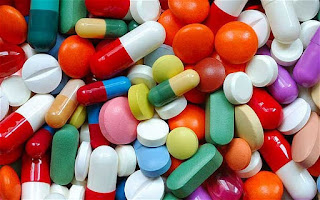Ceftriaxone
Trade name: Rocephin
Class: Antibiotic
"cephalosporines" third-generation
Pregnancy:
(Category B)
Action: Bind to bacterial cell wall membrane,
causing cell death.
Uses:
• Pneumonia, UTI, infections of skin, bone & abdomen.
Meningitis, bacterial septicemia, pre-op. prophylaxis.
Dose
by deep intramuscular injection, or by
intravenous injection over at least 2–4 minutes, or by intravenous infusion, 1
g daily; 2–4 g daily in severe infections;
intramuscular doses over
1 g divided between more than one site , Neonate by intravenous infusion over 60 minutes,
20–50 mg/kg daily (max. 50 mg/kg daily) Infant and child under 50 kg, by deep intramuscular
injection, or by intravenous injection over 2–4 minutes, or by intravenous
infusion, 20–50 mg/kg daily; up to 80 mg/kg daily in severe infections; doses of 50 mg/kg and over
by intravenous infusion only; 50 kg and
over, adult dose
Uncomplicated
gonorrhea, by deep intramuscular injection, 250 mg as a single dose. Surgical prophylaxis, by deep intramuscular injection
or by
intravenous injection over at least 2–4 minutes, 1 g at induction; colorectal surgery, by deep intramuscular injection
or by intravenous injection over at least 2–4 minutes or by intravenous
infusion, 2 g at induction; intramuscular doses over 1 g divided between more
than one site
Contraindications:
• Hypersensitivity to cephalosporin or Penicillin ,renal failure Side effects:
• Nausea, vomiting, diarrhea, anorexia, abdominal pain,
flatulence, skin rashes super-infection, heartburn, sore mouth, bone marrow
depression.
Nursing considerations:
• I.M. injection should be deep into the body of large muscle.
• I.V. injection should be diluted.
• For stability of solution the package insert should be checked
carefully.
Dosage
should be maintained for at least 2 days after symptoms of infection have
disappeared (usual course is 4-14 days).




